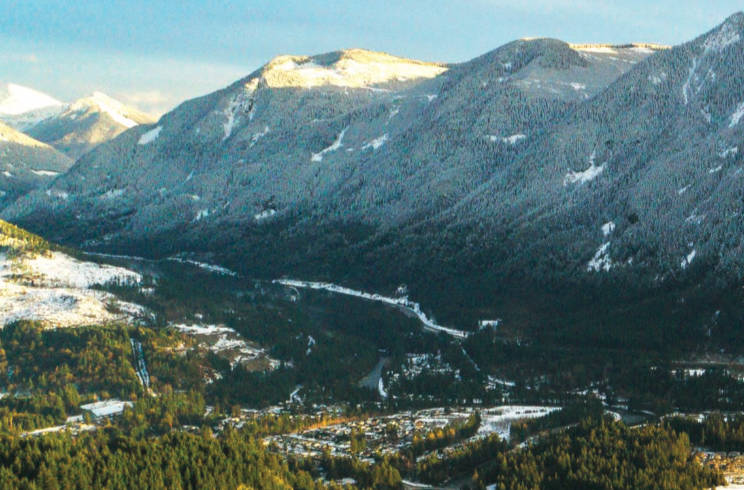
Sunshine Valley is a pleasant mountain community with hundreds of kilometers of snowshoe, ATV, snowmobile, hiking and biking trails that wind their way through the forests of the Sumallo and Nicolum River valleys. Its shallow lake offers paddling in the summer and skating in the winter.
From its roots as a traditional First Nations hunting and berry picking area, Sunshine Valley has a history worth exploring. In 1942, the Canadian government created a coastal exclusion zone and Japanese- Canadians living within that zone were interned in camps across the country. Between 1942 and 1946, approximately 2,600 people were interned at Sunshine Valley, then called Tashme. The name Tashme is derived from the last names of the men responsible for the camp: Taylor, Shirras and Mead.
After the war, a significant number of internees stayed in the area and have built a vibrant Japanese-Canadian community in Hope.
SunshineValley is also home to one of the largest recorded landslides in Canadian history, the Hope Slide. On Jan. 9, 1965 Highway 3 was abruptly closed when weak layers of rock covered with heavy snow on the face of Johnson Peak gave way.
The force of the slide was such that the debris travelled 60 metres up Mt. Coulter (on the opposite side of the valley), obliterated Beaver (Outram Lake) from the topography of the valley and triggered seismographic readings at a monitoring station in Penticton. The slide area was 85 metres deep and three kilometers wide.
Four people were killed in the slide.
Visitors travelling along Highway 3 are driving 55 meters above the original highway surface. At the Hope Slide viewpoint, visitors can see the scars that were left on Johnson Peak by the slide
READ MORE: Golden Country what caused the Hope Slide?
For more information visit The Hope Standard or The Hope Visitor Centre











 Discover Chilliwack
Discover Chilliwack